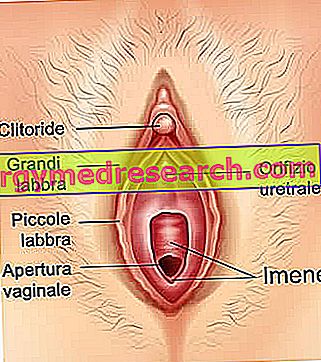One of the most frequent concerns among new mothers concerns the ability to produce milk in quantities adequate to the growth needs of the newborn - infant.
The first milk secreted after birth - in rather small quantities compared to the subsequent stages of breastfeeding - is called colostrum. It is a more yellow and dense liquid than the next milk, characterized by a greater presence of mineral salts and proteins (especially those of whey), but poorer in fats and sugars; it is also a "defensive" milk, because it is rich in antibodies with a remarkable protective capacity against infections, particularly intestinal infections.

During this first phase, lasting 5-6 days, it is completely normal to see a weight loss of the newborn of about 5-10%, linked to the stress induced by childbirth and the loss of fluids with faeces (meconium), breath, sweat and urine.
During the first week, the colostrum gradually changes its composition, until it reaches the so-called "mature" milk. This result is pursued by passing through an intermediate stage (between the 5th and 6th and 10th days), in which the milk is defined as "transitional". During this phase, the quantity of secreted milk increases progressively, while proteins and mineral salts decrease and the percentage of fats and carbohydrates increases.
Around the 5th day of life of the newborn, the mother produces about 480 ml of milk, while after a month 750 ml of milk are produced on average (570-900 ml / day) . Dividing these quantities by the number of daily feedings - quite variable from one newborn to the next in terms of duration and frequency, and, in the same, in relation to the period - the indicative quantity of milk taken at each feed is obtained.
| Child age | Average quantity of milk produced by the mother over 24 hours | Bibliography |
| 5 days | 483 ml | Neville 1988 |
| 1 month | 706 ml | Salazar 2000 |
| 1 month | 673 ml | Dewey 1983 |
| 1 month | 687 ml | Cox 1996 |
| 1-6 months | 440 ml x2 = 880 ml | Kent 1999 |
| 3 months | 793 ml | Dewey 1991 |
| 3-5 months | 730 ml | Neville 1988 |
| 6 months | 896 ml | Dewey 1983 |
| 6 months | 720 ml | Cox 1996 |
| 7 months | 875 ml (meets 93% of the child's caloric needs) | Dewey 1984 |
| 11-16 months | 550 ml (satisfies 50% of the caloric needs of the child) | Dewey 1984 |
How to tell if the child is getting enough milk
- Crying is a late sign of hunger. The newborn can manifest the need to attach to the breast with earlier symptoms, such as opening the mouth, sucking the fists, moving the eyes under the eyelids, making noises or moving the head from side to side.
- The signs that the baby takes adequate amounts of breast milk during breastfeeding are:
at least 3 evacuations a day after the 1st day
yellow and lumpy discharges from the 5th day
at least 6 micturitions a day from the 4th day, with clear or light yellow urine
he is satisfied and happy after feeding
swallowing sounds during feeding
absence of weight loss after the 3rd day
they grow about 20-35 grams a day starting from the 5th day
recovery of birth weight from the 10th day
evident increase in consistency, weight and size of the breasts, and an evident increase in quantity
and milk quality from the 5th day
the nipples show no signs of injury
the feed removes the feeling of fullness of the breasts
- The signs that the newborn assumes inadequate amounts of breast milk during breastfeeding are: the weight gain of the newborn is less than 18 g per day, 125 g per week or 500 g per month; the weight at 15 days of life is less than that registered at birth; the newborn urinates less than 6 times a day, with urine of pungent and concentrated odor (dark yellow that tends to orange), and evacuates hard, dry and rarely stools: In addition to having a reduced weight gain, the newborn poorly nursed can cry often, remain too long attached to the breast, appear lethargic and appear dissatisfied at the end of feeding or refuse the breast.



